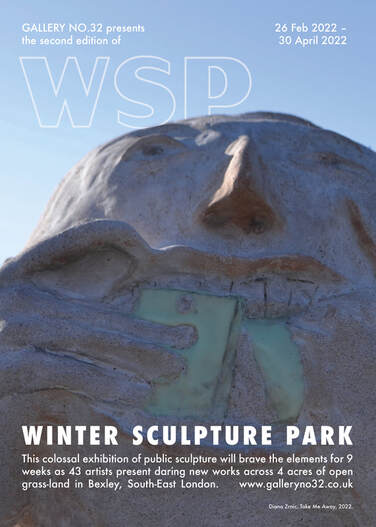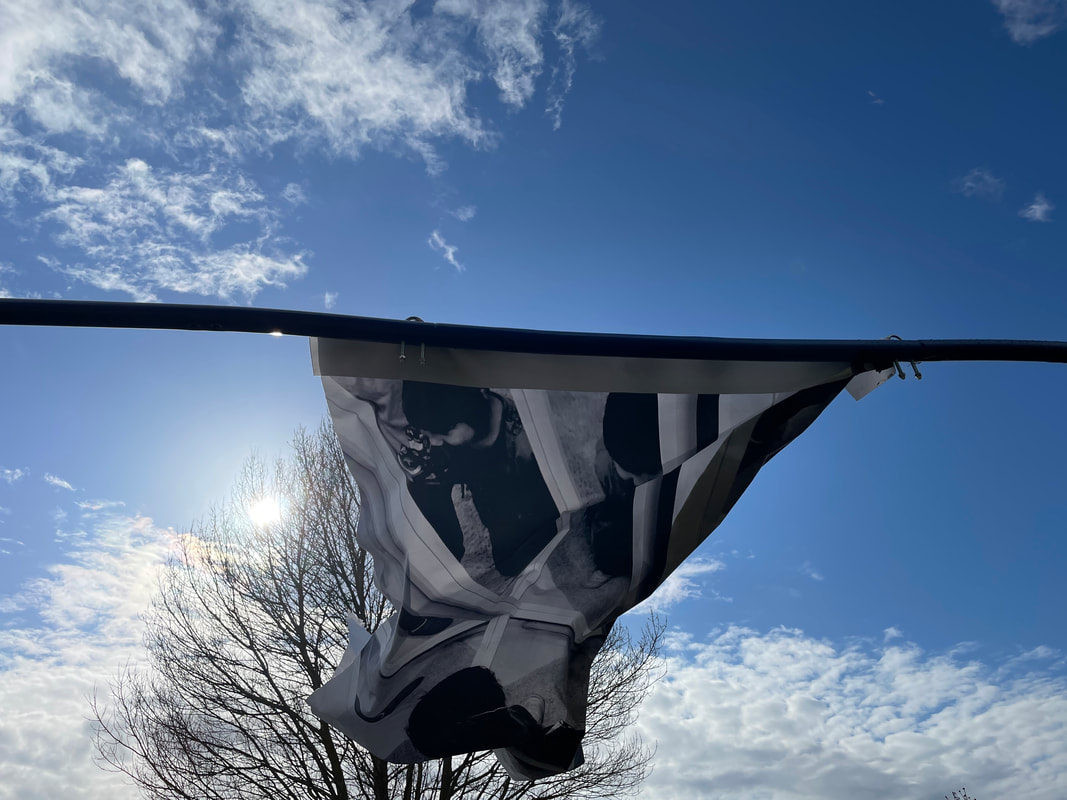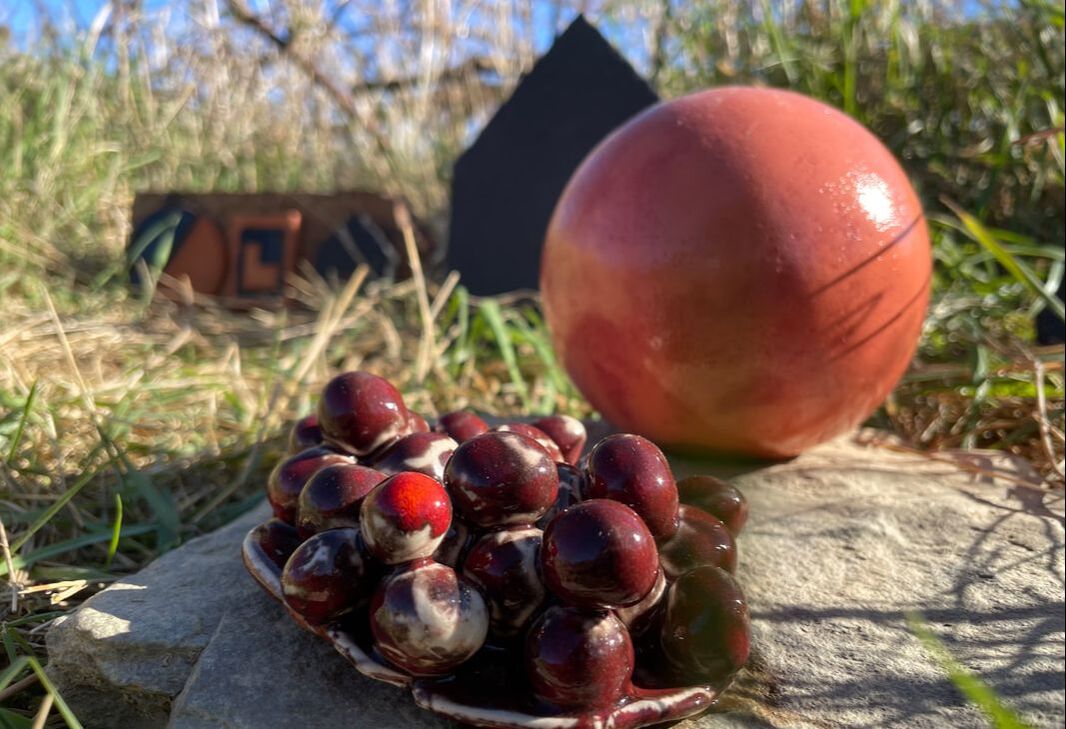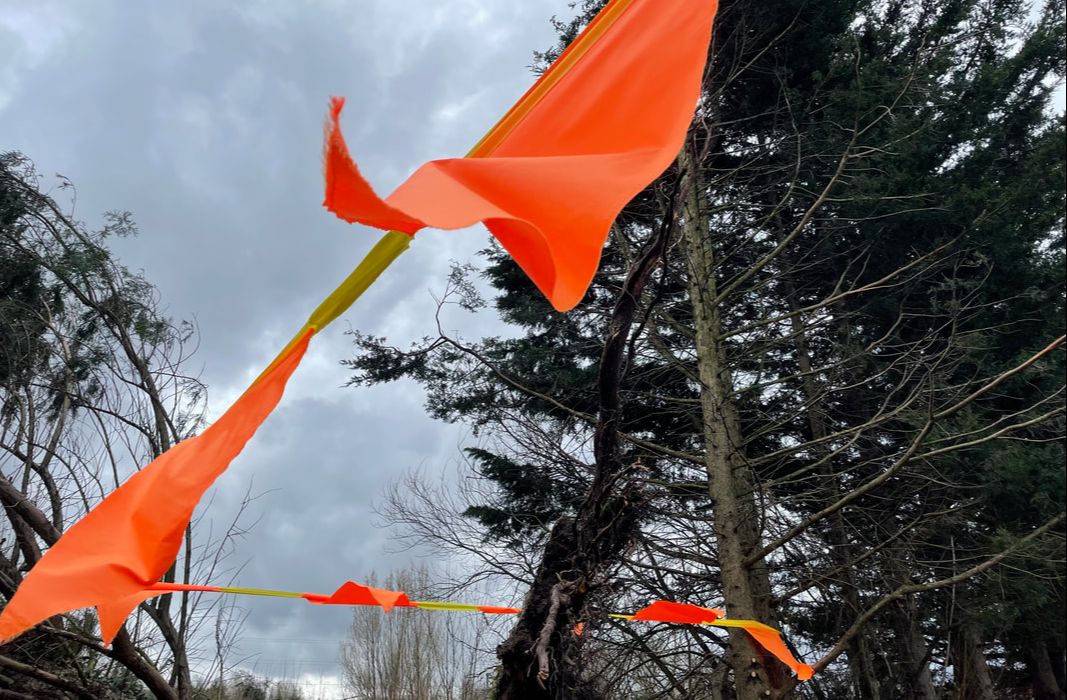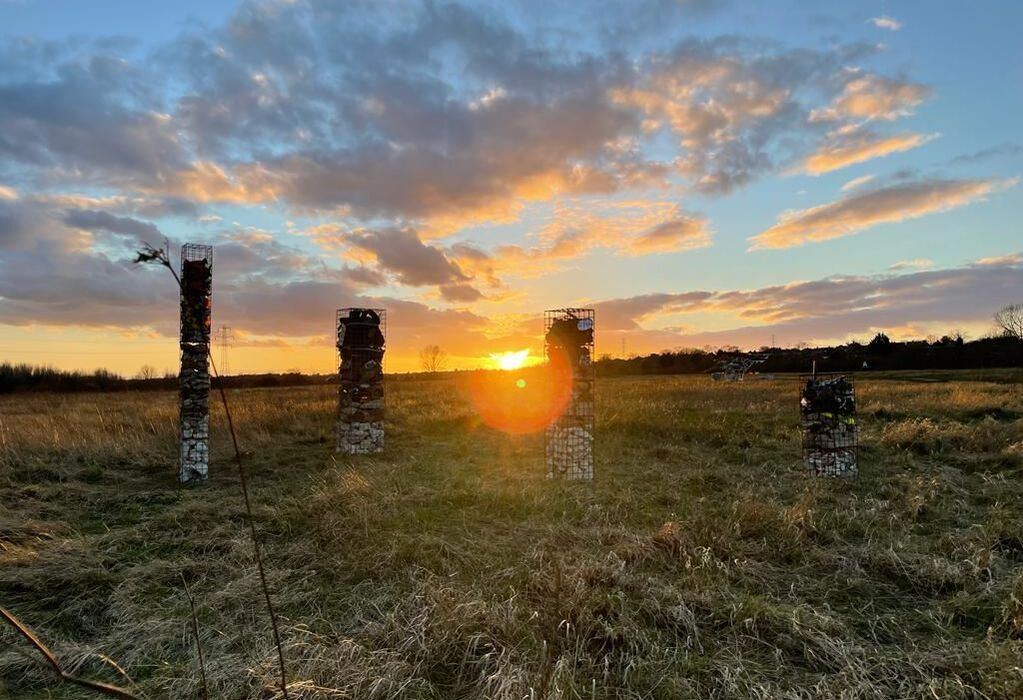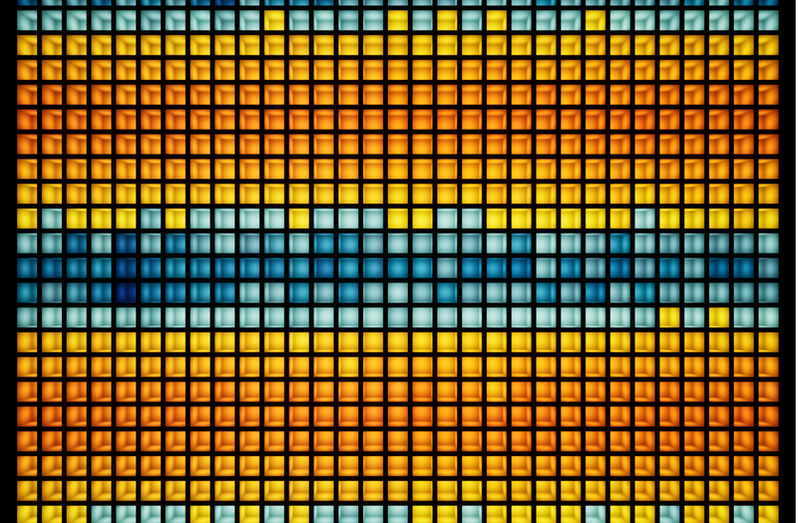Gallery No.32 presents the second edition of WINTER SCULPTURE PARK
Winter Sculpture Park is an annual exhibition of contemporary sculpture and public art. This colossal exhibition of public sculpture will brave the elements for 9 weeks as we invite over 40 artists to occupy 4 acres of disused farmland in Bexley, South-East London.
26th February – 30th April 2022
Winter Sculpture Park is an annual exhibition of contemporary sculpture and public art. This colossal exhibition of public sculpture will brave the elements for 9 weeks as we invite over 40 artists to occupy 4 acres of disused farmland in Bexley, South-East London.
26th February – 30th April 2022
|
Gallery No.32 invites all to engage with monumental modern artwork and adventurous curation.
Featured Artists: Fissility, 2022
Catriona Robertson Urban geology sees a subterranean network of hidden cities beneath us. By covering the ground in concrete tar and bitumen, we are disrupting the ecological cycle as these inorganic materials degrade at different rates with little or no nutritional benefit to the earth. In response to the anthropocene I imagine what future synthetic sediment is being created with plastic, toxic chemicals, domestic and construction site waste, layers of landfill, heavy metals and toxins disrupt natural ecosystems. Fissility explores the weaker cracks and collapse of future sediments where the natural ecosystem has been altered by human activity. Conversations with Trees, 2022
Ella Martin This work documents Ella’s personal connection with the trees of the Hermitage of Braid woodland. She uses drawing and writing to record this playful connection. This research became the banners, inspired by clootie trees (a Celtic tradition where cloth is tied on to trees after being dipped in wells as part of a healing ritual). ‘Conversations with Trees’ gives thanks to the trees and the healing they have offered. For Ella, having her work in a free public art space allows engagement with a wider demographic. She hopes this work draws people into the environment and incites curious exploration and wonder. Past, Present, Future, 2021
Nicola Turner Nicola investigates the dissolution of boundaries, in-betweenness, and the continuous exchange of ecosystems. In doing so, she explores the interconnected web between life and death, human and non-human, attraction and repulsion. Working with materials that hold traces of memory such as horsehair-used previously for bedding and furniture, the works are soaked with lived history. Her work resonates with the notion of abjection and carries within it an acute awareness of death. Yet, an affirmation of life’s forces is simultaneously allowed to arise. Nicola relishes opportunities to respond to place and to have open access to her work. Promotion, 2021
Tom Cardew Promotion, is a study on corporate, tragically masculine aesthetics. Tom; 'I see this sculpture as a kind of scarecrow that expresses the bathos inherent to the financial industry and its agents.' Tom's film, installation & writing practice processes and explores tacit societal structures of competitive and comparative worth, meditating upon the markers, myths and materials that shape them. His work centres upon questions of authenticity and memory within the digital, atmospheres and social scaffolds formed through transactional, value-based exchange, and of (digital) para-social relations. Gardens of Progress (Prototype), 2022
Marie-Louise Jones Marie-Louise thinks about matter and material practises, including the ways we labour on and interact with nature. Taking inspiration from machine-made environments in contrast to organic lines of the wild, uncivilised landscape, she explores notions of progress and seemingly opposing forces. Having access to public space for WSP has allowed Marie-Louise a more experimental approach, enabling the creation of Gardens of Progress (Prototype), a monolithic slab imitating the public monument. Hybridising an expanding, growing organism with inert, industrial matter, it reimagines Barbara Hepworth's ‘Cantate Domino’ as a brutalist form awakening from modernist dreams of a future utopia. SPIN, 2022
Laurence Green Laurence's work expands and contracts, blurring between sculpture, painting and installation. From imitating the architecture of a space, interrupting a space or surface, to creating apparatus for play, his practice questions the usefulness of function, and considers the activity of passing time. Sometimes the materials are found and sometimes bought, rescued and given a new purpose in life - even if this is a non apparent, unknown function. They have no idea what they will become. A tree grows up, is cut down, separated from its other body parts, and ends up turning into a new thing. Superhero, 2022
Li An Lee Superhero, is a helicopter view image of children in the everyday. The expanse of mirror and floor reiterate the expanse of the field. Li An Lee’s images act as portals into an intimate moment of a child’s intellectual engagement and wonderment with their everyday surroundings, just as adults find wonderment in nature. The structure echoes outdoor play equipment as well as structures often found indoors. The display of work engages play for the viewer through the process of observing the work. This requires the movement of the viewer to engage with the work. Vāsanā, 2021-22
Ema Mano Epps & Jyoti Bharwani Vāsanā is a site specific artwork, built for public engagement. The work is made of materials relating to the environment, human habits and behaviour. Often overlooked and invisible, the materials are found and collected. In engaging with them we release their agency to help us revise human connections with the environment, ourselves and each-other. Vāsanā ultimately poses a question about human significance above all else. By immersing materials in the landscape, the expanse of space facilitates the releasing of vasanas, thus removing human superiority. Are We Sinking?, 2021
Tere Chadwick This sculpture shows three vultures staring at an origami paper boat, sinking. It references the current world's collapse in a theatrical way. The birds will not save humanity like in the biblical story ‘Noah’s Ark’, but in a world where institutions and religion appear to have lost their value and credibility, the vultures just stare, waiting to see humanity sink. The piece was firstly presented at the terrace of the Royal Society of Sculptors in Chelsea as part of the graduation show of the Sculpture Programme at the Royal College of Art ‘SPACE LAPSE: RCA Sculpture 2020.’. Now the work is resident at Gallery No.32 for the entirety of 2022. Untitled, 2022
Lucy Faherty Creating work for the outdoors forces Lucy to re-evaluate her working process, considering how a piece stands alone without the constraints of walls or decoration and how it can be best made to survive in the outdoors. Consequently, the sculpture Lucy is featuring in #WSP32 is not only made to survive in the outdoors but also respond to it. The resin encased rock, which sits on top of a concrete plinth, will only become visible when wet allowing the frosted resin to become clear. Become-ing, 2022
Gloria Sulli Gloria's practice takes inspiration from nature and life processes, so the outdoor is the ideal place to enjoy it. Here, the work interacts with the living world, human and other-than-human. The public art space allows Gloria to install works outdoors, perceiving them under the elements. Gloria is an Italian artist living in London. Her art practice investigates concept of connection, life and death, spirituality, inspired by the living world. The art practice is spanning from drawing on aluminium foil to small size ceramic sculptures to bigger scale installations. Folly: Of myths and mortals, 2021-22
Matt Foster Stories, passed down, read aloud or alone, performed or imagined. Myths, legends and make belief. Where do the characters go that are conjured from worlds and built in our minds? These are the tenets of Matt's artistic practice as he explores his memories of stories told and the characters that develop in his imagination. Showing at the WSP32 gives him the space and free rein to expand his dreams into an almost theatrical set with mythical figures under an open sky. 
These and Those and Them, 2022
Tom Witherick As a sculptor, Tom’s work involves aspects of assemblage, performance and writing. With an interest in materiality and material symbolisms, Tom explores the representational and descriptive capabilities of matter through how things are made and what they’re made of. This is further explored through the language associated with the work. Material lists and descriptions vary in degrees of detail and further play with the readings of each piece by delving deeper into their materialism. They then begin to read more like recipes or incantations, made up of strange ingredients and ritualistic processes of making all of which are imbued with a poetic materialism and heavy sense of time and place. Women's Work, 2018
Deborah Frith Deborah works in a variety of materials including stone, metal and ceramic. ‘Women’s Work’ came into being because of a comment made by the public for her first piece of metalwork. They commented on their surprise that it was made by a woman. Deborah responded by making a sculpture essentially feminine, also celebrating 100 years since women got the right to vote. Deborah returned to creating artwork after a break of 15 years, where she worked as a graphic designer. Originally a figurative sculptor she developed a wider interest in materials after visiting an exhibition by Anthony Caro at the Yorkshire Sculpture Park in 2016. Since then she has been open to creating work in a wider variety of material. |
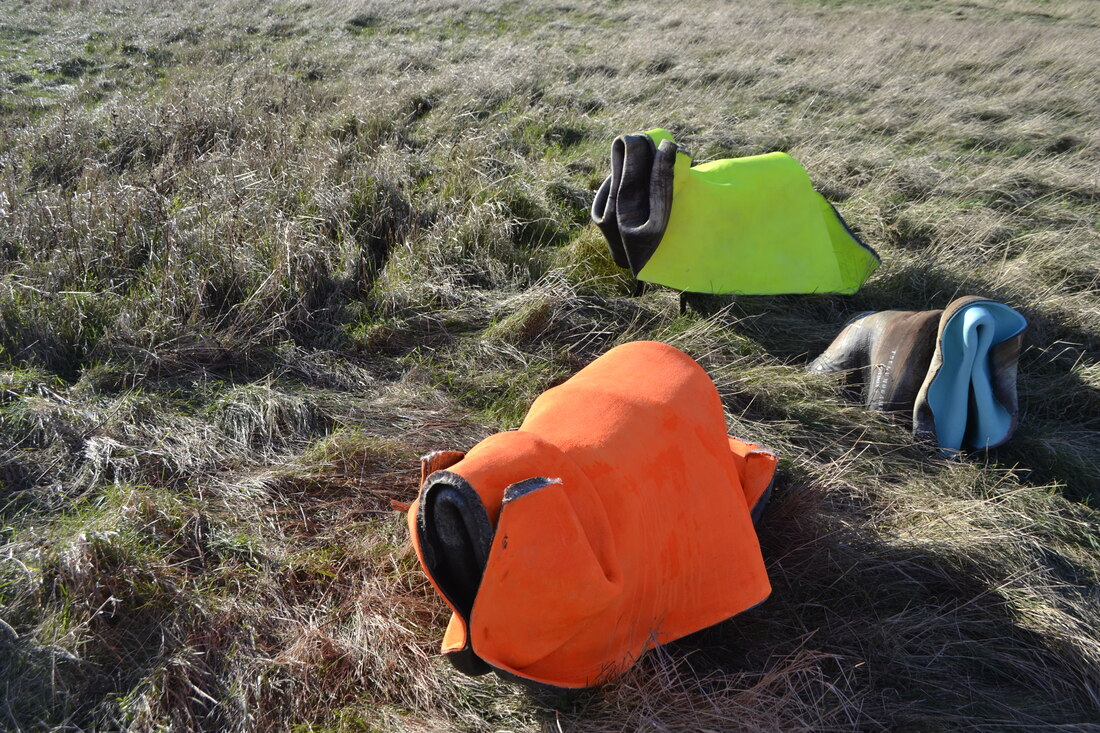
Tsukumogami Sheep, 2013
Philip Micheal Wolfson Fusing fine art and functional design pushes boundaries in how we interact with our surroundings. Philip Michael Wolfson investigates from an architectural foundation, crossing sculpture, installation, experimental design, interactivity, film and art, examining space and form. Through an apprehension of examples ranging early 20th C Modernist Movements, particularly, Constructivism and Futurism, and theoretical elements of the Concrete Poetry movement, Wolfson is prospecting new visual territories in the field of narrative object & space. His approach to functional sculpture, design and art is informed by the fracture of form – layering and manipulating 2D and 3D studies into fluid forms, where light, shadow and reflection are integral to the seduction of the work. Ware House, 2022
Mez Kerr Jones Ware House, is a ceramic construction of dwellings, buildings and architectural forms that reference the life and landscapes of post-industrial towns. Mez's practice is interdisciplinary and site-specific, involving collaborations, material explorations, questions, curiosity, installation work, writing, performance, and ceramics. Her work focuses on the connections between power and spatiality, profit and justice, and employing art as a form of architectural/societal critique. Filled With Hope III, 2022
Patrick Colhoun The Filled With Hope series comments on the reliance on, and ease of accessibility to prescription medication to treat anxiety and depression. Often seen as a quick fix, these medications can mask the problem. Will the tablet solve the problem, or should the tablet be the thing to be put in the skip? This allows the viewer to decide; good, or bad. Differing from previous versions where the ceramic tablet hung freely, Filled With Hope II sees the tablet bolted directly to the ceramic skip, perhaps signifying the next stage of addiction. Conversely, the control exerted on the tablet perhaps saves the vessel itself from potential damage. Flagged Up, 2021
Helen K Grant A string of giant pendants made from fluorescent hi-vis fabric. Its gaudy colours are at odds with the green backdrop of the sculpture park, with unclear intentions. Bunting usually decorates parties and celebrations but this supersized effort could be a cordon that denotes danger or reasons to be cautious. Made during the last lockdown, the work is an ambiguous response to our return to ‘normality'. It is of immense benefit to show Flagged Up at Winter Sculpture Park where it will be seen by many in a truly natural habitat. In The Wardrobe, 2022
Erika Trotzig Central to Erika’s art practice is the notion of failure: failure as a political statement, failure as protest, as a methodology. She investigates what it means to be a body in the world, the permission to take up space. To work in a public art space has enabled Erika to put her work in a new context, allowing experimentations with scale as well as encouraging a playful approach. It has allowed her to make un-monumental things imbued with a sense of comedy where improbable meetings of material and construction methods play with notions of the absurd and vulnerable. Having a Break, 2022
Gabriela Pelczarska Gabriela explores material properties by creating tension between their unique characteristics and subverting how we encounter their form and history. She chooses raw materials, interested in the interplay between elements with no modification, and how this returns to the universal struggle of humanity against gravity. Her sculptural practice is a journey, its life before during and after, a process not fixed to one form and space. The work is usually site specific, exploring its own possibilities. This process is largely visible in the making and the choice of materiality, exposed and performed by sculptural elements in continuous acts. Bexley Village, 8th January 2022, 2022
Martha Ellis Martha is driven by the challenge of showing the world in positive/negative space. Inspired by urban and natural environment from her daily life and travels, she tries to document certain places and moments in time. Martha transforms complex observations into graphic, bold hand cut drawings. Having this opportunity to exhibit a sculpture in public space has pushed her work into three-dimensional drawing. Martha's previous works have featured wall mounted drawings, sitting away from the wall to allow shadows to be cast. Now, she is creating ‘cutout’ drawings in a sculptural form. Untitled #1 20-21, 2021
Mike Lowry Mike creates 3D forms from sheet materials, combined with mould making and casting. An important part of his making is fabricating from the 2D of sheet material into 3D, to create possibilities within the sculpture. His steel sculptures can be abstract, figurative or have a modernistic architectural element, some are built large scale. When combining steel forms with figures in the sculpture, he reflects on issues affecting people and society, creating a narrative. Becoming Geology, 2021
Liz Clifford There are 30 trillion tons of human generated substances on earth, half is urban mass, before artefacts and packaging. Those artefacts will form the techno-fossils of future geology. Salvaged concrete and brick form layers above a bedrock of chalk, with plastic and steel detritus left by users of the southern countryside. Collected over a year from a rural location, these materials are packed into four structures made of gabion baskets, each also containing a thin layer of moss, illustrating the proportion 1:10 biomass to human-generated deposits of an average sq/m. The opportunity to show here, on an area of reclaimed landfill allows it to become a site-specific response. The structures grow from the grass like samples of the layers beneath. Well, what did you expect?, 2022
James Cross James' practice explores the use of objects and images as foundations of storytelling, with a particular interest in the potential for multiple interpretations of the same material. The works investigate our relationships with objects, materials and physicality; and how these elements relate to our perception and the experience of our surroundings. The opportunity to show work outside recontextualises its relationship with the world. The wonderful thing about Gallery No.32 is that it is truly open, anybody can interact with the work. It gives the viewer a freedom of choice, but it also allows the work to act in an exciting, unexpected way. Skin, 2022
Vanessa Walters Vanessa's practice explores the stream of consciousness and the potential for fictioning within this. Rooted in language, her work considers the archive in both a physical and emotional sense. Through laboured and attentive processes of making, threads of emotion or fleeting thoughts are preserved, as the works perform as acts of narration. Vanessa (b. 1994, Malta) is an artist and poet living and working in London. Recent work has been included in the new anthology Now I Know, Daylight published by Pilot Press, F(r)ictions.6 film screening Summer Programme (online), and the Deptford X Fringe Festival 2021. She is currently working towards her MFA in Fine Art at Goldsmiths. Study for a Shield after Battle (Goddess of Lead), 2021
Charlotte Cullen Charlotte Cullen’s practice is a ghost story. Cullen makes things, broadly concerned with steel and its production and shaped by the body and care. The landscape, and issues of land ownership, situates this encounter, encompassing sculpture, installation, mark-making, text, print and finding ways of documenting gesture. stories we could tell, 2021
catch me if I fall, 2020 Nigel Wood In driftwood, unloved furniture and scrap Nigel has found raw materials with sense and meaning in regard to what he does with them – as like people they are victims of circumstances. Their relationship with and shaping by the sea, found environments and experiences, parallels ours and our surroundings. Each dominated, more than many acknowledge, by things beyond our control. Overwhelmingly luck, hope, wishful thinking and the toll of simply being. All of which express grace, pathos and beauty through all manner of stories concerning the ultimate power of nature, tragedy of the male ego, human strength and weakness. aintlifewonderful.co.uk Dead tree turned to an ashen silver, 2022
Jesse Tadini Rybolt Jesse Tadini Rybolt is a sculptor, musician and performer currently living and working in London. The primary concern of his work is the interaction between humankind with both the built and natural world, the effect on our environments and in turn the ways in which they affect us. Using mostly steel and timber, he creates sculpture that interacts with animals, plants and people. Creating homes or creating prisons, attempting to cause a reflection both within himself and the viewer on how we interact with our world and with each other. |
THIS AINT ENUF, Mark II, 2022
Fredrix Vermin THIS AINT ENUF was originally a comment on the climate issues caused by post-colonial and industrialist ideals, and the overwhelming feeling of hopelessness in tackling them. Unfortunately, The original work was destroyed during a time of great personal upheaval. Mark II represents an acceptance of grounding futility in Fred's life caused by mental illness and its repercussions. A humbling shoulder shrug and palms to the sky moment. Currently unemployed and having to stay with friends, the chance to make, show and share my work with new audiences is invaluable beyond belief. Toren, 2021
Tammy Woodrow Experimental large scale assemblage inspired by the story of the Tower of Babel. This piece represents a crumbling, destructed structure. The anti-construction is an anarchistic visualisation of disintegrated societies where communications have broken down. The climbing frame also refers to the idea that 'play' is essential for every artist's practice; to keep experimenting and making 'happy' mistakes in the studio. The safety tape refers to current societal/pandemic state of affairs and a bleak future when we will be living in a world where there is no place for play by artists or children because everybody is too busy surviving. Belly at Home, 2020-2022
Cecily Loveys Jervoise Cecily makes foraged clay ceramic sculptures exploring relations and disconnections with the natural world. Her forms echo the land the work is made from and for, taking inspiration from the ponds and parks where she digs her clay. The work frames clay as a giver of life, the belly of earth, exploring connections between women and vessels. Materiality and the handmade are highly present, reflecting on consumerist conventions and the act of making. At Gallery No. 32, the sculptures will grow up trees and root into the ground, burrowing into and growing out the earth they came from. Take Me Away, 2022
Diana Zrnic Diana seeks interactions between painting, photography, digital drawing, and sculpture, by deconstructing and interlacing. This creates a pathway to explore the relationship between spaces and interactions. The work is informed by 21st century spatiality, described as the proliferation of spaces. It is an analogue representation of the digital and the actual overlaps in everyday life, exploring the experiences shaped by their crossover. Drawing on Mark B. N. Hansen's account of experience, the works depict the reality of being implicated in an excessive number of processes at various scales and how the body is the co-processor of digital information. Fallen Window; Pagan Plastic, 2020-22
Joe Edwardes-Evans Joe's work looks to re-cast, re-arrange, or assemble found objects and discarded waste, ‘fallen’ materials, making models of them as a way of researching perceived notions of object purpose. That art should be exercised as a public good is one of the few assumptions that all art should make, if we agree that art is first and foremost a means of communication. Free art is, then, like a right: to be taken for granted, and never taken for granted. Pulpy Infrastructure, 2022
Annie Strachan Through recycling unwanted card, paper, wood and paint into new forms, Annie creates purpose from waste, adding value to items that might not otherwise be easily recycled. The prohibitive costs of traditional sculpting materials has hugely influenced the direction Annie's work over the last few years. Pulpy Infrastructure is made almost entirely from recycled materials sourced within the Royal Borough of Greenwich. Annie encourages accessibility, and the use of low-cost recycled materials elevates this. Producing artworks that possess a function beyond the decorative, her works play a necessary role in everyday life. Hordillo, 2020
Dollyolli London-based, DollyOlli is a collaboration between Olivier Adam (sculptor) and Marie Brenneis (Visual Artist). They combine sculpture and design, making the functional sensory, fantastical and humorous. They consider how today’s utilitarian spaces increasingly condition our visual freedom and imaginative potential. Their work attempts to encourage imagination and quirkiness within public spaces. They are both Inspired by experimentation with materials, colour, round and scale. Snowshoe, 2022
Titus Davies Titus uses ruptures and matter out of place to explore the interface between the built environment, the domestic, and the natural world. Snowshoe is a hybrid object - it's about 'disappearing' the damage we have done as humans. A table or bench is normally there for human comfort; this piece flips those assumptions by 'removing' the surface with which we normally engage. We will watch the pristine mirrored surface become 'dirtied' by nature over several months. Making art in a public space provokes me to engage with the many connections and histories enmeshed in the site. Self(un)centered
Jane Thomson Excited about the juxtaposition between the ever-changing landscape and the hard, unmoving, static qualities of Perspex, Jane explores a more progressive way of collaging using the natural environment. The engraved female images remain strong and unmoved, interacting with the ever-changing sky and foliage in the background. An assemblage of different forms, thus creating a new whole. The viewer can change the height and distance the work is viewed, deciding on which background enhances the images and finding that perfect angle, the position that all elements come together as one. super low frequency attenuation deflector, 2021
Lorraine Snape Interventions in the landscape respond to changing elements and weathering, creating fleeting illusions. Lorraine aims to spark curiosity with her work, igniting a sense of awe. Inviting the viewer to catch a glimpse by revealing that which is unseen or hinted at, to highlight invisible forces and make concepts tangible, the everydayness of the objects she employs belie the event being played out and act as perfect magician, misdirecting. She sees the audience not only as the observer but as the active participant; reaching a wider public through real-world experience is crucial. Themselves, also a disturbed climate, 2021
Lily Bunney Lily's work explores queer ecologies and world building; wrestling through the paradox of contamination and care. She explores materials that she finds uncomfortable, mycelium networks being a pertinent example. For Lily, mushrooms are fascinating yet untrustworthy, a material-making tension. Her process hinges on extracting emotional narratives from research into science and science fiction, queer and auto theory, and environmental collapse. She is also heavily influences by her work as an alternative provisions teacher. Lily Bunney (b. 1997) lives and works in London. Climate Coding, 2021
Wenwen Liu Wenwen is currently researching art, climate change and future sustainable development. Thus, she went to the Kubuqi Desert in China exploring participatory observational research. Based on the outcomes of this, she used algorithm programming and 3D engine design to create this artwork: Climate Coding, responding to climate change. This work is usually shown in a digital format, but has been printed to exhibit with Gallery No.32. Pendulum, 2022
Emma Louise Moore Emma Louise explores the mentality of a crowd. Investigating their movements, her works calls for an awareness of our complacent tendency to follow others, becoming ontological refugees, distanced from our individuality. Through investigating the tendency of crowds, Emma identified the importance of monuments. A monument is indicative of the focus of a society. Though worshipping of the sun was replaced by worshipping people, it maintains the ability to guide. Her monumental pieces are phenomenon facilitators, acting as vessels for the sunlight to guide us once more. The light commands the piece, which in turn commands the rhythms and motions of the crowd. NA, 2022
Emma Papworth Drawing influence from elements of 20th C. architecture, modern cityscape and industrial production, Emma makes sculptures and installations that are curious about the urban environments we inhabit. She is interested in how architecture can be deeply engaged with the metaphysical question of the self and the world, interiority and exteriority, time duration, and how it represents the changing values of the times. Emma's work questions the urban environments we inhabit, drawing on materials and forms that express their age and history, as well as the story of their origins and past human use: to offer imaginary futures as well as contemplations on technology, tradition, community and long timescales. |
CONTACT US
Please contact us with any questions via Instagram @Gallery_no.32.
Alternatively, please contact us via email at [email protected]
Curated by: Meg Stuart & Kieran Idle
Please contact us with any questions via Instagram @Gallery_no.32.
Alternatively, please contact us via email at [email protected]
Curated by: Meg Stuart & Kieran Idle
